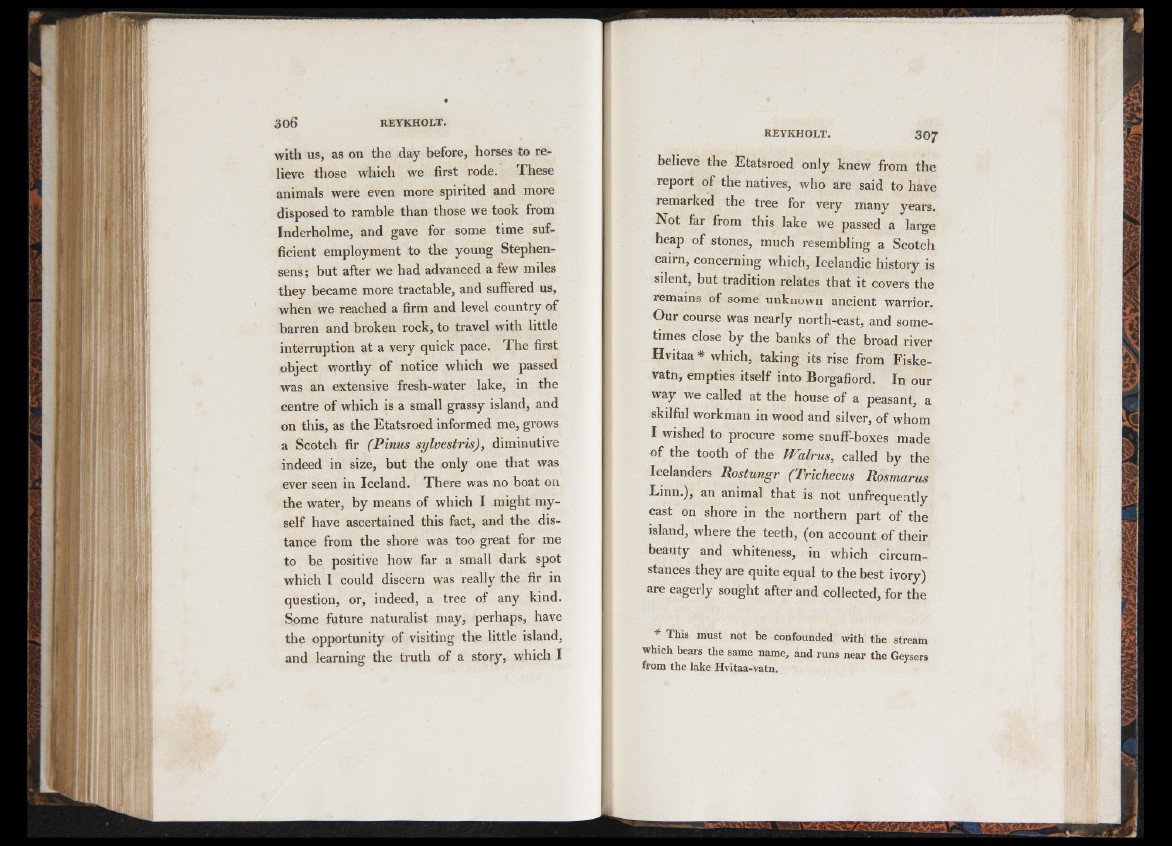
with us, as on the day before, horses to relieve
those which we first rode. These
animals were even more spirited and more
disposed to ramble than those we took from
Inderholme, and gave for some time sufficient
employment to the young Stephen-
sens; but after we had advanced a few miles
they became more tractable, and suffered us,
when we reached a firm and level country of
barren and broken rock, to travel with little
interruption at a very quick pace. The first
object worthy of notice which we passed
was an extensive fresh-water lake, in the
centre of which is a small grassy island, and
on this, as the Etatsroed informed me, grows
a Scotch fir (Piwus sylvestris), diminutive
indeed in size, but the only one that was
ever seen in Iceland. There was no boat on
the water, by means of which I might myself
have ascertained this fact, and the distance
from the shore was too great for me
to be positive how far a small dark spot
which I could discern was really the fir in
question, or, indeed, a tree of any kind.
Some future naturalist may, perhaps, have
the opportunity of visiting the little island,
and learning the truth of a story, which I
believe the Etatsroed only knew from the
report of the natives, who are said to have
remarked the tree for very many years.
Not far from this lake we passed a large
heap of stones, much resembling a Scotch
cairn, concerning which, Icelandic history is
silent, but tradition relates that it covers the
remains of some unknown ancient warrior.
Our course was nearly north-east, and sometimes
close by the banks of the broad river
Hvitaa * which, taking its rise from Fiske-
vatn, empties itself into Borgafiord. In our
way we called at the house of a peasant, a
skilful workman in wood and silver, of whom
I wished to procure some snuff-boxes made
of the tooth of the Walrus, called by the
Icelanders Rostungr (Trichecus Rosmarus
Linn.), an animal that is not unfrequently
cast on shore in the northern part of the
island, where the teeth, (on account of their
beauty and whiteness, in which circumstances
they are quite equal to the best ivory)
are eagerly sought after and collected, for the
* This must not be confounded with the stream
which bears the same name, and runs near the Geysers
from the lake Hvitaa-vatn.